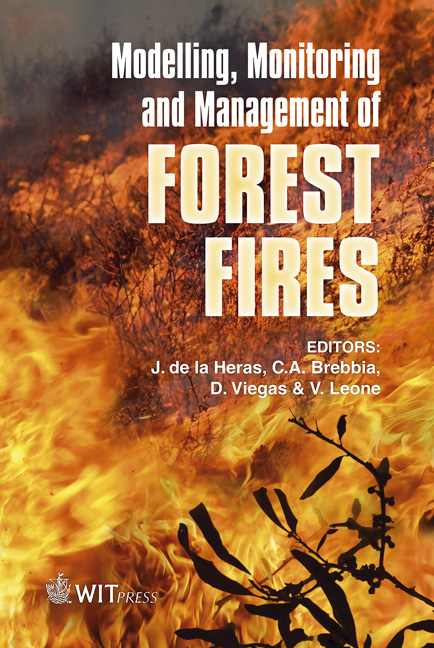Study Of Wildfire In-draft Flows For Counter Fire Operations
Price
Free (open access)
Transaction
Volume
119
Pages
10
Page Range
13 - 22
Published
2008
Size
461 kb
Paper DOI
10.2495/FIVA080021
Copyright
WIT Press
Author(s)
R. Roxburgh & G. Rein
Abstract
The use of counter-fires to gain control over wildfires is a technique used by some fire services around the world. A fire is purposely lighten ahead of the wildfire and the buoyancy induced in-drafts pull it towards the flame front thus creating a fire break of burnt fuel. Well used, this technique is fast, effective and safe. However, no technical research has been done on the subject. Without understanding of the mechanisms, counter-firing remains a difficult technique and can lead to unnecessary risks being taken or opportunities lost. This paper uses computational fluid dynamics to study the in-draft created around wildfires. A generalized structure of the in-draft velocity profile composed of three zones is observed. The length of the different zones are analysed to find the dependence with fire intensity and wind velocity. Keywords: entrainment, fire fighting, suppression, back fire, computer modelling, CFD, FDS. 1 Introduction A common method of wildfire suppression is the use of fire breaks to stop the progress of a flaming front. Fire breaks are strips of land from which all or most of the flammable materials have been removed [1–3]. These strips create fuelless barriers past which the wildfire cannot spread as it no longer has fuel. These can often be incorporated into natural fire barriers such as rivers, canyons and roads in order to increase their size and effectiveness. The width of a fire break has to be sufficient large to avoid the flaming ignition across it. A common rule based on the radiant power states that a fire-break must be one and a half times as wide as the flame height [2, 3]. One speedy way of creating a fire break is to light a counter fire a certain distance in front of the main wildfire. Due to the
Keywords
entrainment, fire fighting, suppression, back fire, computer modelling, CFD, FDS.





